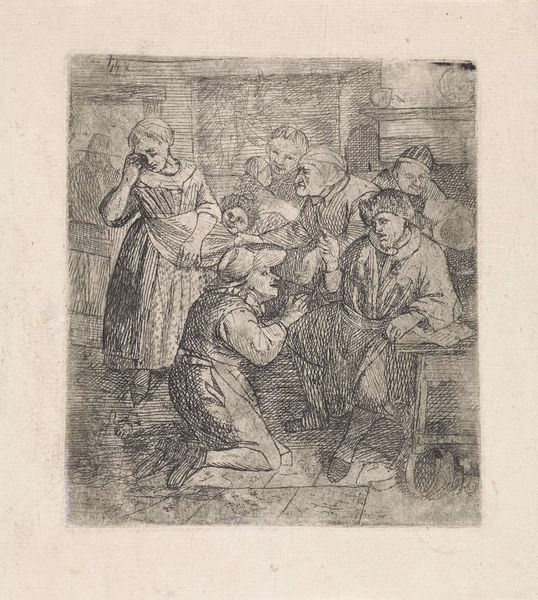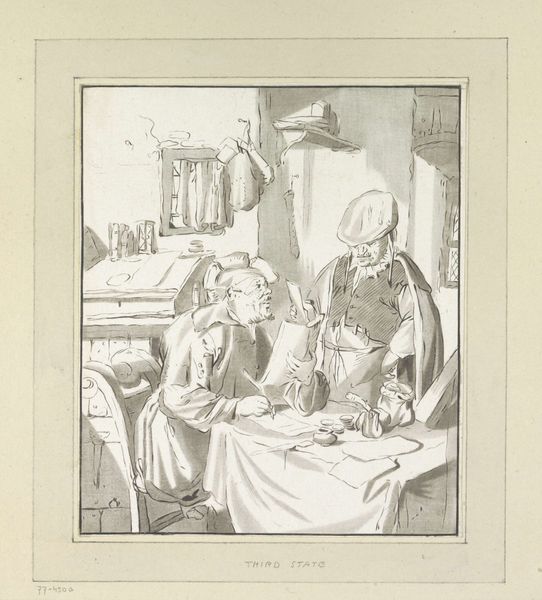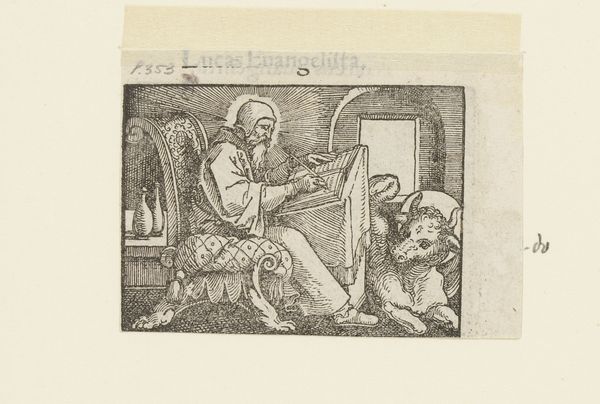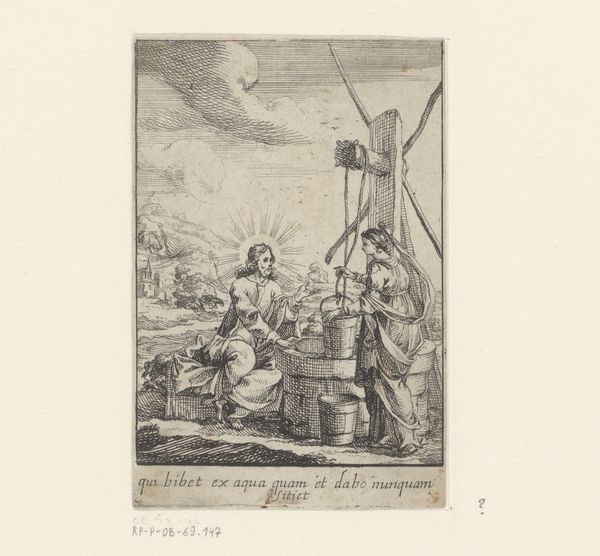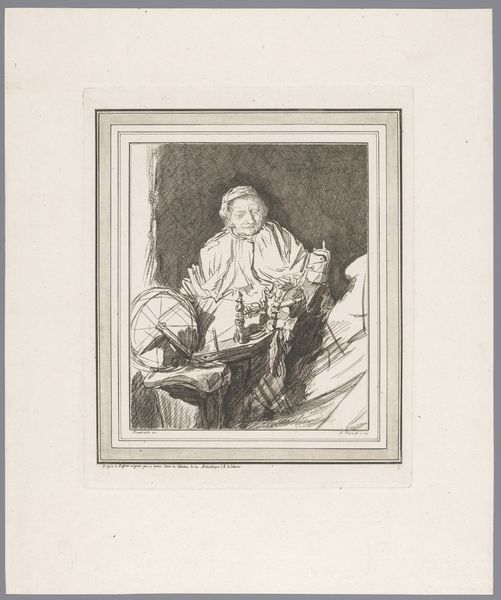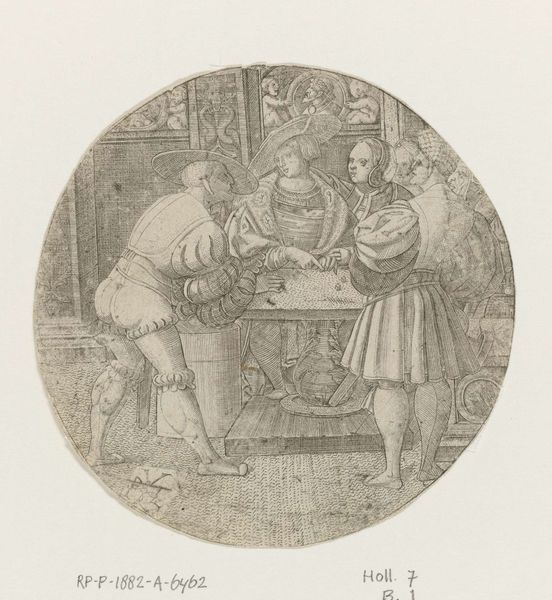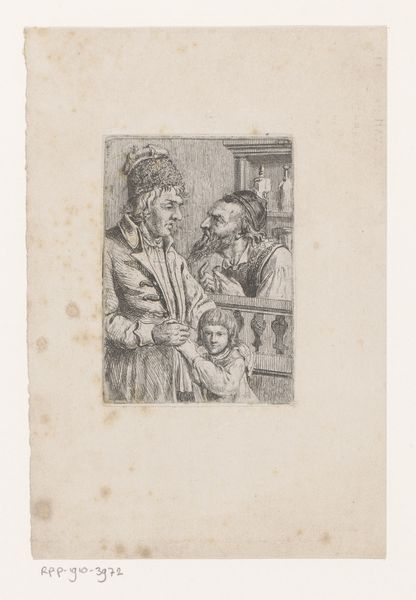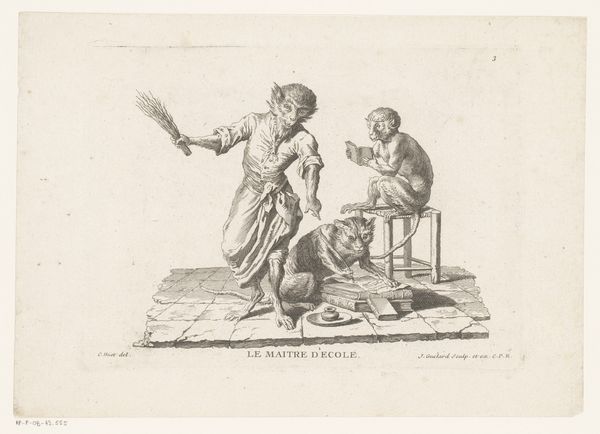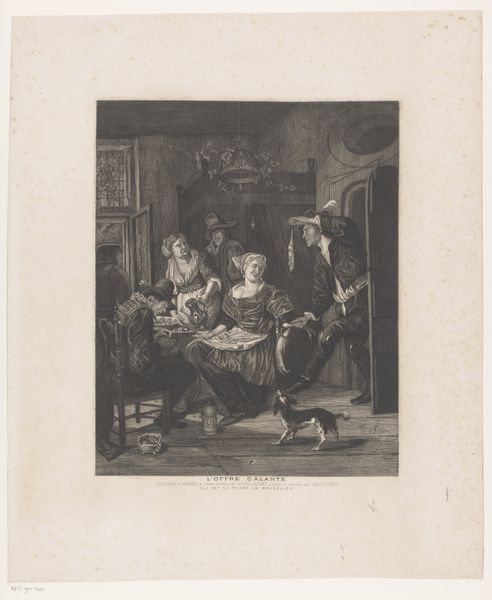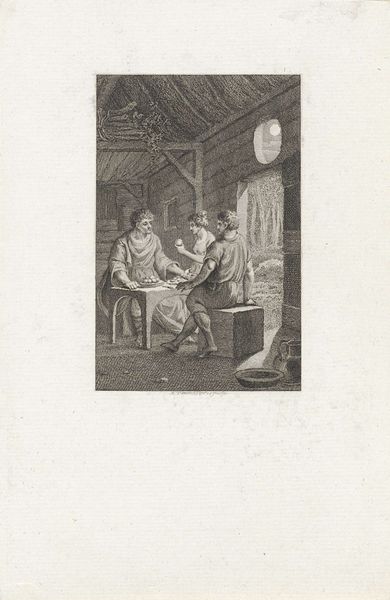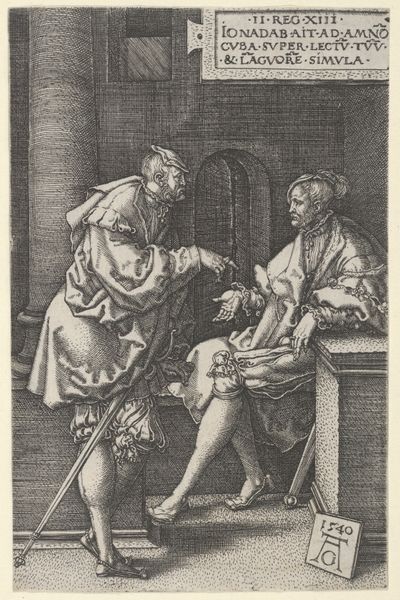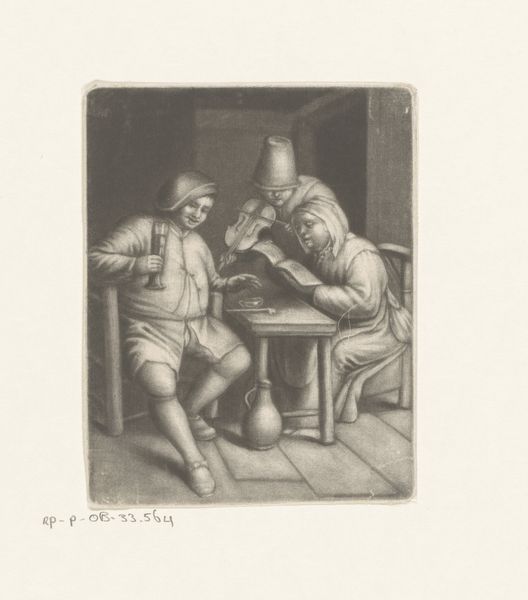
print, ink, engraving
#
narrative-art
# print
#
pen illustration
#
old engraving style
#
figuration
#
ink line art
#
ink
#
line
#
northern-renaissance
#
engraving
Dimensions: height 105 mm, width 73 mm
Copyright: Rijks Museum: Open Domain
Editor: Here we have an engraving from 1527 called "Annunciation," by an anonymous artist, rendered in ink. It’s a fairly simple composition, black lines on a white background. What strikes me is the visible texture of the lines and how they define the forms. What’s your take? Curator: I see a fascinating confluence of material practices here. This isn’t just a religious image, but a product of very specific labor. Consider the physical act of engraving - the tools, the pressure, the skill required to translate an idea onto a metal plate. This was a craft, a trade. How does understanding the "how" of this print affect your reading of the Annunciation itself? Editor: That’s a great point. Knowing that it’s an engraving, seeing those precise lines… It makes it feel more tangible, somehow. Less ethereal and more like a constructed object. Curator: Precisely! And that constructedness is tied to social context. Think about the distribution of prints at this time. Who was commissioning these? Who was buying them? Engravings like these weren’t just art; they were commodities, circulating images and ideas through early modern society. How does this shift your focus when engaging with religious artwork? Editor: I guess I hadn’t really considered the economics of it all. It changes my perspective completely. It’s not just about the religious narrative, but about the means of production and how it was consumed. So it makes it about more than the scene, but the labor and commercial aspects involved. Curator: Exactly. The materials themselves - ink, paper - speak to a whole system of production and exchange. By looking at the material conditions, we move beyond purely aesthetic or religious interpretations. Editor: Wow. That’s definitely given me a lot to think about, approaching art with focus on materials. Curator: Likewise. Seeing your engagement reminds me of the power of looking at art through multiple lenses, bridging divine narrative to everyday commerce and production.
Comments
No comments
Be the first to comment and join the conversation on the ultimate creative platform.
